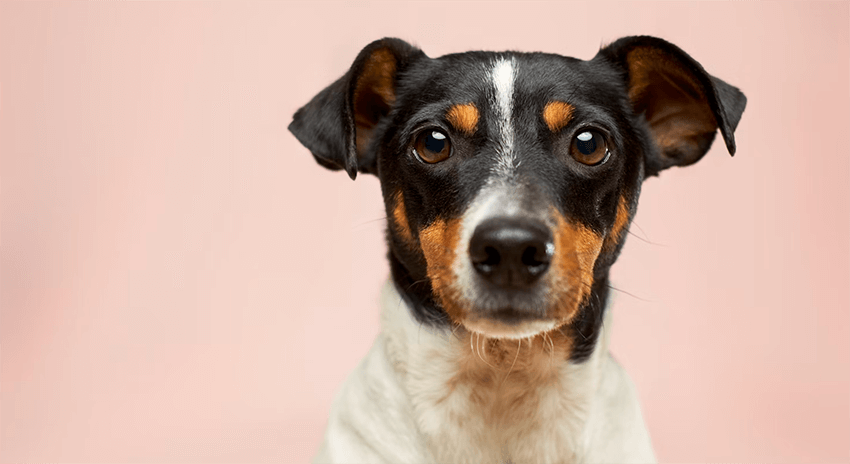The pet industry is huge. Globally, it’s worth a staggering $280 billion—and rising. So if you’re looking to make money from a blog, then pet blogging is a great option. Plus, if you love your furry friends, pet blogging will be a whole lot of fun.
We’re going to run through all the steps you need to take to start a pet blog and make money from it. We’ll take a look at some fantastic and well-established pet blogs & examples, too, so you can learn from how those pet bloggers are making their blogs a success.
Whether you’re a dog person, a cat person, or you just have a pet goldfish, pet blogging could open up a whole new world for you. Ready to get going? Let’s dive in.
How to Start a Pet Blog (and Make Money): Pet Blogger Examples & Guide
- Figure Out the Right Niche for Your Pet Blog
- Choose the Perfect Domain Name for Your Pet Blog
- Pick the Right Web Hosting to Get Your Pet Blog Online
- Design Your Pet Blog with Free Tools & Platforms
- Come Up With Smart Post Ideas for Your Pet Blog
- Understand the Basics of SEO to Grow Your Pet Blog
- Use Social Media to Get Traffic to Your Pet Blog
- How to Make Money Pet Blogging (3 Smart Ways)
- Pet Blogger Examples: 10 Best Pet Blogs to Learn From
Disclosure: Please note that some of the links below are affiliate links and at no additional cost to you, I’ll earn a commission. Know that I only recommend products and services I’ve personally used and stand behind. When you use one of my affiliate links, the company compensates me, which helps me run this blog and keep my in-depth content free of charge for readers (like you).
Ready to Start Your Blog Today?

Check out my ultimate guide How to Start a Blog (on the Side) that’s been featured on Forbes, Inc and Entrepreneur.
Now, let’s jump into my complete guide to pet blogging.
1. Figure Out the Right Niche for Your Pet Blog
All blogs have their own “niche” or focused topic area. With pet blogging, you’re probably not going to blog about every possible topic to do with pets.

Most pet bloggers specialize in a specific animal or group of animals: blogging about dogs, cats, reptiles, fluffy small pets, rodents, or other types of pets. Some pet bloggers narrow this down further—for instance, they might blog about puppies, or about elderly dogs who have health conditions. There are also plenty of dog training blogs, where experts share their tips for having a happy, well-trained pooch.
What pet niche will be right for you? You might want to think about:
- Which animals you’re most drawn to: If you love all things cat-related, then a cat blog might be a great option for you. If you’re an experienced dog owner, a dog blog makes sense.
- Which animals you have lots of experience with: Perhaps you were a paid dog walker on weekends in your teens, or your family always had hamsters and mice when you were growing up. You might also have adopted a cat or taken in a rescue dog, giving you a unique insight into those areas.
- Whether there’s a particular angle you want to take on pet blogging: Maybe you particularly love helping new pet owners get set up with their puppies—or you want to share helpful tips for experienced owners who now have elderly or even handicapped pets.
- Whether you want to mainly blog about your own pet’s adventures: That could work well if you’re reviewing toys your pet has loved or equipment you’ve found useful—or if you have an especially photogenic pup.
- Your target audience: You might think about your future readers and their income level, how many pets they own, their current pet-related know how, and so on. This’ll help hone your pet blogging ambitions in a direction that ensures an audience you can monetize with.
Your blogging niche will influence the name of your new blog—so don’t move on until you’re fairly clear about what niche you want to be in. If you want some more inspiration, check out my list of profitable niches too.
2. Choose the Perfect Domain Name for Your Pet Blog
All blogs have a domain name (website address). Mine is ryrob.com. Your blog’s name needs to reflect what your blog is about. It should be memorable and easy for people to type into a search engine. Ideally, you’ll want it to end .com, though there are plenty of other domain suffixes to choose from too.
If you want to run a quick search to see if your dream pet blog domain name is available, you can do it quickly right here using my domain name generator:
Check if your domain name is available:
Later, we’ll take a look at some popular pet blog examples in detail—for now, here are a few of their names to give you some idea of the range of possible domain names for your pet blogging adventure:
- Adopt a Pet
- The Catnip Times
- The Dogington Post
- Bodie on the Road
There are lots of companies that can register your domain name for you. I’d recommend that you register your domain name with your web hosting company (which we’ll come onto in a moment), as many web hosts offer a free domain name along with their hosting.
3. Pick the Right Web Hosting to Get Your Pet Blog Online
Every blog needs web hosting. Your web host securely stores all the pages, images, and so on for your website, and keeps your site online 24/7/365.
There are dozens of fantastic web hosting companies out there, which can make it tricky to know what to look for when you’re just getting started.
I always recommend Bluehost and Dreamhost to beginners. Both of those hosting providers work seamlessly with WordPress (my favorite blogging platform by far)—and both have great deals for your first year of blogging. You’ll get a free domain name, too, helping keep costs down even further.
If you want to find out a bit more about those web hosts and how they compare, check out my full review on Bluehost vs Dreamhost.
4. Design Your Pet Blog with Free Tools & Platforms
Ultimately, it’s up to you which blogging platform you use for your pet blog. I always recommend WordPress: it’s flexible and built with good blog SEO in mind. If you follow along with my comprehensive guide to starting a blog, that’s exactly how we’ll get your pet blog set up.
Once you’ve set up WordPress on your blog—which only takes a click or two with Dreamhost or Bluehost—then you can start to customize your blog so that it looks great.
Some easy tools to use are:
- WordPress Themes: A WordPress theme is like a template for your blog that controls things like the font size, colors, and placement of different elements on your site. You can change your theme as often as you like—your content (blog posts and pages) won’t change. There are lots of excellent WordPress themes available completely free of charge, though you can also upgrade to premium (paid) themes if you want extra features. One of my favorite themes is Elementor: the theme pairs with Elementor’s great drag-and-drop page builder so you can easily customize your website.
- WordPress Plugins: One of the best things about WordPress is that it can be endlessly extended using plugins—add-ons for your blog. Plugins let you do things like add a contact form to your site, sell products online, add social sharing buttons to your pet blog, and much more. You can even use plugins to create an online forum or run a podcast from your website.
- Free Images: Great photos of pets will add visual interest to your blog. It’s important to use copyright-free images, if you’re using photos you’ve found online: the websites Unsplash, Pixabay, and Pexels are all good sources of these.
5. Come Up With Smart Post Ideas for Your Pet Blog
What should you write about on your pet blog? Maybe you want to share pet-related news, product reviews, or tips for pet owners. You could spend some time brainstorming ideas. Think about what you wanted to know as a new pet owner or what you’ve learned about your pets over the years.
Some easy ready-made ideas for pet blogs are:
- Writing a “beginner’s guide” to owning a dog/cat/rabbit/whatever type of pet you blog about.
- Writing about the top pet products you’ve bought in the past year.
- Sharing your tips on a common question or problem (e.g. how to stop your cat from scratching your furniture).
- Training tips (e.g. training your dog to walk on a leash).
- Signs and symptoms of pet health issues, like fleas and ticks, and how to treat them.
- Sharing quotes or funny posts from pet lovers.
You can also use my AI tool RightBlogger to generate lists of blog post ideas. RightBlogger is also a full AI writing tool that can help you do lots of other things, like write high-quality content, too. Here’s a set of ideas it came up with in just a few seconds for the keyword “puppy training”:

Once you’ve done your homework on what to write about for your pet blog, it’s time to make sure your ideas align with real topics other pet owners are searching for answers on. Enter: keyword research.
6. Understand the Basics of SEO to Grow Your Pet Blog
If you’re aiming to make money from your pet blog, SEO (search engine optimization) will be an important part of your strategy. Successful pet blogs normally get a lot of their website traffic from Google.
Search engine optimization is the practice of making your blog and its content easy for search engines to find and rank. Ideally, you want your blog posts to outrank competing pieces on similar topics—so that your posts come within the top results of a Google search for their topic.
There’s a lot to learn about SEO, but the basics are quite straightforward. You should:
- Base your posts on a keyword. A keyword is a short phrase that someone would type into a search engine when looking for information. For instance, “crate training a puppy” is a keyword. So is “best cat toys”. My free keyword research tool will help you find keywords to use (there’s plenty of guidance and help on that page, too).
- Use that keyword in your post’s title. This helps both search engines and their users to know that your post is highly relevant to the user’s search. You should also use your keyword within the text of your post, and it’s a particularly good idea to work it into one or more subheadings. Use my free blog title generator to come up with great ideas.
- Sign up for Google Search Console. You’ll then have access to lots of useful tools and information about your pet blog. You can use Search Console to do things like submit a sitemap to help Google crawl and index your blog.
- Write guest posts for other pet blogs. This helps you build links back to your own blog (great for search engines) and also establishes a relationship with other website owners.
As you publish more high quality content and establish yourself as a pet blogger, you’ll have more opportunities to write for other pet blogs & brands where you’ll be able to build links back to your blog—and see your content rise in organic Google search rankings, too.
Use My Free Keyword Research Tool

Try my free AI-Powered Keyword Tool to get dozens of research-backed ideas for keywords & topics to write about on your blog today.
7. Use Social Media to Get Traffic to Your Pet Blog
As well as using SEO best practices to help your blog gain more visibility in Google and other search engines, you can use social media to grow a following for your blog.
Which social network should you choose? If you have a particularly photogenic pet, then Instagram could be a great option for you—especially if you’re looking to become a social media influencer. If you want to write about your pet in a humorous way, Twitter might be the best fit. For lists of ideas, products, and activities, Pinterest could be perfect. And if you love creating videos, TikTok might be the right online space for you.
Ultimately, there’s probably not one “right” social media site for your pet blog: what matters is that you find a site that you enjoy using, where you can take the time to build up a following and promote your blog content.
How to Make Money Pet Blogging (3 Smart Ways)

While some people go into pet blogging simply to share tales of their pet’s exploits and their family adventures, many pet bloggers are aiming to make money. Let’s take a look at three key pet blog monetization options that let you bring in income from your pet blog.
Affiliate Marketing
Affiliate marketing means promoting someone else’s pet products (or services) and earning commission on any sales that they make as a result.
It’s really easy to get started with and it’s a great fit for pet bloggers who write product reviews or roundups, gift guides, or anything else that involves linking to lots of products.
Many online stores have an affiliate program: Amazon’s is well-established and one of the most popular affiliate networks for pet bloggers. Joining the Amazon affiliate program gives you access to all sorts of pet products to promote, including pet toys, pet food, equipment, and more.
Note that you’ll need to disclose all of your affiliate links, under FTC guidelines. Here’s my affiliate disclaimer, feel free to use it near the top of your posts too (above any affiliate links):
Disclosure: Please note that some of the links below are affiliate links and at no additional cost to you, I’ll earn a commission. Know that I only recommend products and services I’ve personally used and stand behind. When you use one of my affiliate links, the company compensates me, which helps me run this blog and keep my in-depth content free of charge for readers (like you).
Advertising and Sponsored Posts
Another way to make money from pet blogging, is to run advertising and/or sponsored posts.
Like with affiliate marketing, you’re promoting someone else’s services or products—but instead of being paid based on sales, you’re paid a flat rate (usually determined by your blog’s traffic) or you’re paid a small amount for each click on the ad.
For advertising, the simplest way to do this is by signing up for an ad network, like Google AdSense. There are also plenty of networks for sponsorships, or you can approach brands directly to ask if they’d like to sponsor a post.
As with affiliate links, you should disclose if a particular post has been sponsored.
Selling Products and Services
You can also make money from your pet blog by selling your own services or products aimed at pet parents. For instance, if you’re an expert in looking after and training puppies, you might sell an online course about the first 12 weeks of having a new puppy. Or you could have an ebook available for download that tells your pet ownership story.
Creating products can take a lot of time and resources, especially if you’re coming up with a physical product—that may need to conform to specific legal requirements. Most pet bloggers will start off with affiliate marketing or advertising and then consider adding in products of their own once their blog is making money.
10 Best Pet Blogs to Follow in 2023 (Top Pet Bloggers)
Ready for some pet blogger inspiration? Take a look at some of my favorite pet blogs around today.
1. Pet P.L.A.Y

The Pet P.L.A.Y (“Pet Lifestyle and You”) blog is packed with articles all about dogs, covering a range of different topics—like safety, illnesses, top products, and more. They also feature guest posts from other pet bloggers who want to share their stories.
P.L.A.Y’s products are luxury, eco-friendly ones designed to appeal to “modern pet owners”. These include dog beds, cat beds, and a range of toys. As well as being sold online through the website, their products are carried by a large range of stores.
2. The Good Dog Blog (SitStay.com)

The Good Dog Blog, from SitStay.com, proudly proclaims that their posts are both written and reviewed by veterinarians. Topics covered on this pet blog include all sorts of aspects of dog training, dog products, issues like shedding, toys, and a wide range of dog health issues.
SitStay.com makes money from selling a range of products in their online shop (from a number of different brands). Their blog posts often promote these products, too.
3. Adopt a Pet

Adopt a Pet is a blog all about pet adoption, which supports the Adopt a Pet Website—matching up shelters, rescues, and private owners with potential adopters. The blog is supported by advertising, but mainly exists to serve the online platform. Adopt a Pet also has a strong Facebook presence.
4. The Dogington Post

The Dogington Post is, as you might expect, all about dogs. (Its name is a playful take on the Huffington Post.) This dog blog shares all sorts of content for dog lovers, including news stories, product reviews, information posts, and weekly roundups of funny dog-related content on social media.
5. The Conscious Cat

The Conscious Cat shares lots of cat-related information, often with a personal slant from authors who talk about their personal experiences (as in this post about cats and babies). Articles on this cat blog cover issues like cats that keep trying to escape, how to train your cat to walk on a leash, and information about working cats.
The blog is monetized through affiliate links, particularly to Amazon. There’s even a product guide that brings together lots of their reviews and recommendations.
6. The Catnip Times

The Catnip Times, founded by Lauren Mieli, is full of news, facts, and articles for cat owners. It covers topics like cat behavior and cat care, as well as having a number of articles rating and reviewing cat-related products like scratching posts. It’s monetized through ads and affiliate links.
7. Bodie on the Road

A more personal take on pet blogging, Bodie on the Road tracks the adventures of Bodie and his owner Belinda Jones. The blog covers pet travel tips, trips to dog-friendly places, dog-friendly resorts, Bodie’s reviews of products, and more. Belinda’s book, Bodie on the Road, is promoted on the blog, along with her other books; the site is also monetized through affiliate links.
8. Whole Dog Journal

Whole Dog Journal has a wide range of posts from different authors, covering common questions and explaining topics in a beginner-friendly way. There are articles on different dog food options, behavior, training, health, dog gear, pet care, and more. The site is a companion for the Whole Dog Journal publication, which comes out monthly in both print and digital formats.
9. The Wildest

Covering a range of pet blogging classic topics, The Wildest covers all the basics of health, nutrition, behavior, and more for dogs and cats. They sell a membership program called The Wildest Pack, where you get access to live help and premium chats, and even a DNA test for your dog. The blog is also monetized through affiliate links.
10. The Happy Puppy Site

The Happy Puppy Site, run by founder and pet blogger Pippa Mattinson, is packed with information about different dog breeds, puppy care and development, and more. There’s also a dog names guide and step-by-step advice on crate training, along with lots of other training tips. The site makes money through ads and affiliate links and through the sales of books written by Pippa and her daughter Lucy.
Ready to Start a Pet Blog of Your Own?
Hopefully you’re feeling inspired by these pet blog examples—and you’re ready to start your own pet blog of your own.
Pet blogging could be a way to spread the word about a cause close to your heart, like pet adoptions or pet charities and nonprofits that you want to support. Or, your pet blog could grow into a profitable full-time business: one that brings in money through product sales, affiliate commission, or advertising revenue.
Whatever your goals are for your pet blog, it all starts with getting your site online. If you’re stuck or not quite sure what your next steps are, just check out my step-by-step tutorial on starting your own blog. You could have your pet blog ready in just 10–15 minutes.
Ready to Start Your Blog Today?

Check out my ultimate guide How to Start a Blog (on the Side) that’s been featured on Forbes, Inc and Entrepreneur.


Sir, I am not understand too much from this theoretical part. Do you make any learner videos on blogging? I mean video graphy is best part to understand very well.
Yes, of course! Check out my how to start a blog tutorial video in this guide: https://www.ryrob.com/how-start-blog/
As a pet lover and aspiring blogger, I found this article extremely helpful and informative. The tips and examples provided are practical and inspiring, and I appreciate the emphasis on creating valuable content and building a community around your blog.
Ah, I’m so happy to hear that David! Let me know when you launch your pet blog if you decide to go that route, I’m excited to see it 🙂
Bloggers provide readers with insights, advice, and perspectives that they may not find elsewhere, and can help to educate, entertain, or inspire their audience. Whether you are looking to start your own blog or simply enjoy reading others’, blogging can be a valuable tool for learning, connecting, and engaging with others online.
Amen to that! 🙏
As a pet lover and aspiring blogger, I found this article extremely helpful and informative. The tips and examples provided are practical and inspiring, and I appreciate the emphasis on creating valuable content and building a community around your blog.
Thank you for sharing this valuable information. I really enjoyed reading your post and gained some new insights on blogging today. Looking forward to more informative content from you.
This blog dedicated to pet blogging is a valuable resource for those passionate about sharing information and stories about our furry companions. With a wealth of insights and tips on pet-related topics, it’s a hub that can inspire and guide pet bloggers in creating engaging content that resonates with fellow pet lovers.
Gulp, what a mouth full. I just want to sit down write about me and my dog Dodger I am totally uninterested in anything that has to do with business. I am a published writer many times over and I was only hoping to start a blog so as to expand my work, only to find out it’s a business.
Simplicity blogging is not what I thought it was nor can I find anyone to explain it to me. I am 65, having grown up in a world where technology was a dream, I think I have grappled with it and have a good understanding, but to find people to explain things online on with phone calls is hard to find. So alas I will go on my way and leave blogging to this younger generation and maybe find another alternative for sharing my experiences with Dodger and me. God Bless this generation 😎be coo
I was reading pet-related articles on PetCareRx and felt really inspired to start my own blog. Thanks to your article, I now know the right way to do it. Great article.
Hi Ryan,
I’m a pet blogger !
But I actually own a dog and I journal about our life together
Hope you and your readers find it interesting:)
Simon
Love this! It really helped me figure out what my niche is going to be and everything on how I can get started! Hopefully will have an easy transition from my current person blog to my pet, dog blog:) thanks so much for the info!